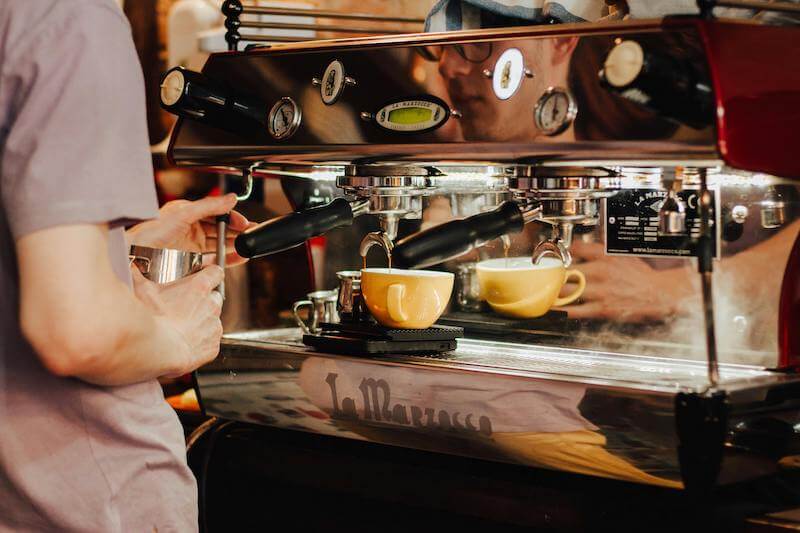Why Budgeting is Essential
Budgeting is the backbone of any successful small business, and cafes are no exception. Without a solid budget in place, it’s easy to lose track of expenses, overspend on supplies, or fail to set aside funds for unexpected costs. A well-planned budget helps you manage your resources effectively, ensuring you can maintain quality while maximising profitability. Let’s explore some key strategies to help you create a budget that works for your cafe.
Creating a Realistic Budget
1. Assess Your Fixed and Variable Costs
The first step in creating a budget is to identify your fixed and variable costs. Fixed costs include rent, utilities, insurance, and salaries—expenses that remain relatively consistent each month. Variable costs, such as ingredients, supplies, and marketing, can fluctuate depending on your sales and seasonal factors.
To get a clear picture of your financial situation, track all of your expenses for at least three months. This will give you a baseline to work from and help you identify areas where you can cut costs or allocate more resources.
2. Set Financial Goals
Setting financial goals is crucial for keeping your cafe on track. These goals can include increasing monthly revenue, reducing waste, or saving for future investments. Break down these goals into smaller, actionable steps and assign a budget to each. For example, if your goal is to reduce waste, you might allocate funds for staff training or invest in more efficient equipment.
There are various budgeting tools available that can simplify the process of managing your cafe’s finances. Software like QuickBooks, Xero, and Cafe POS systems offer features specifically designed for small businesses, allowing you to track expenses, manage payroll, and monitor cash flow in real time. These tools can save you time and reduce the risk of errors in your financial planning.
Cost-Saving Strategies Without Compromising Quality
1. Reduce Waste and Increase Efficiency
Reducing waste is one of the most effective ways to save money without compromising quality. Start by conducting a waste audit to identify areas where your cafe is losing money. Common sources of waste include overproduction, spoilage, and inefficient use of ingredients.
Consider implementing portion control measures to ensure consistency and reduce food waste. For example, using standardised recipes and measuring tools can help maintain portion sizes and minimise excess. Additionally, review your menu regularly to remove items that are underperforming or too costly to produce.
2. Source Ingredients Locally
Sourcing ingredients locally can be a cost-effective solution that also supports your community and reduces your carbon footprint. Local suppliers often offer fresher produce and can be more flexible with pricing, especially if you establish a long-term relationship.
Visit local farmers' markets, collaborate with nearby farms, or join a local food cooperative to find reliable sources for high-quality ingredients. Not only can this reduce your overall costs, but it can also enhance the freshness and appeal of your menu items.
3. Invest in Energy-Efficient Equipment
Investing in energy-efficient equipment may require an initial outlay, but it can lead to significant savings over time. Look for appliances with high energy ratings, such as refrigerators, ovens, and dishwashers. These appliances use less electricity and water, reducing your utility bills.
Additionally, consider implementing energy-saving practices, such as turning off equipment when not in use, using LED lighting, and optimising your heating and cooling systems. These small changes can add up to substantial savings in the long run.

Practical Budgeting Tips for Daily Operations
1. Monitor Inventory Closely
Inventory management is critical for controlling costs and avoiding waste. Implement a system for tracking inventory levels and set reorder points to ensure you don’t overstock or run out of essential items. Regularly reviewing your inventory data can help you spot trends, identify slow-moving items, and adjust your orders accordingly.
Incorporating technology, such as inventory management software, can streamline this process and provide real-time insights into your stock levels. This allows you to make informed decisions and reduce the risk of over-ordering or under-utilising inventory.
2. Optimise Staffing Levels
Labor is one of the largest expenses for any cafe, so it’s important to optimise your staffing levels. Analyse your sales data to identify peak hours and adjust your schedule accordingly. Avoid overstaffing during slow periods, but ensure you have enough staff during busy times to maintain service quality.
Cross-training your employees can also improve efficiency and reduce labor costs. For example, train your baristas to handle light kitchen duties or have your servers assist with cleaning during slow periods. This flexibility ensures that your team can adapt to changing demands and keep operations running smoothly.
3. Negotiate with Suppliers
Don’t be afraid to negotiate with your suppliers to get the best prices. Whether you’re ordering coffee beans, packaging, or cleaning supplies, negotiating can lead to discounts or more favourable payment terms. Consider consolidating orders to increase your purchasing power and leverage better deals.
Additionally, explore alternative suppliers or bulk purchasing options. By shopping around and comparing prices, you may find more cost-effective solutions that still meet your quality standards.
Additional Resources
For more information on budgeting and financial management for cafes, visit these websites:
Effectively managing your cafe’s finances is key to sustaining your business and ensuring long-term success. By following these budgeting tips for cafes, reducing waste, and finding cost-effective solutions, you can maintain quality while keeping your costs under control. Remember, a well-managed budget not only improves profitability but also allows you to reinvest in your business, enhancing customer experience and expanding your offerings.
For more detailed advice on financial management, be sure to check out the resources provided above.






